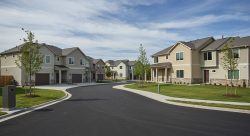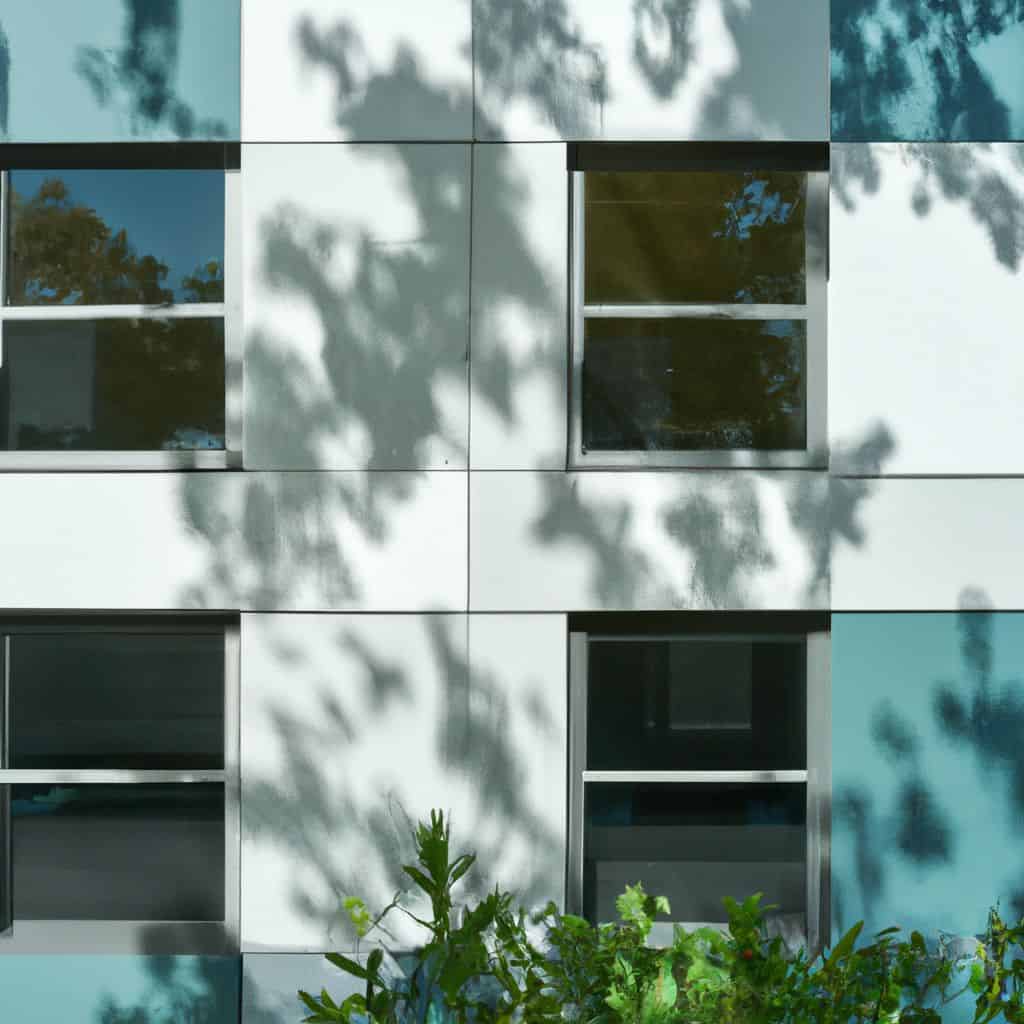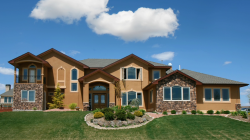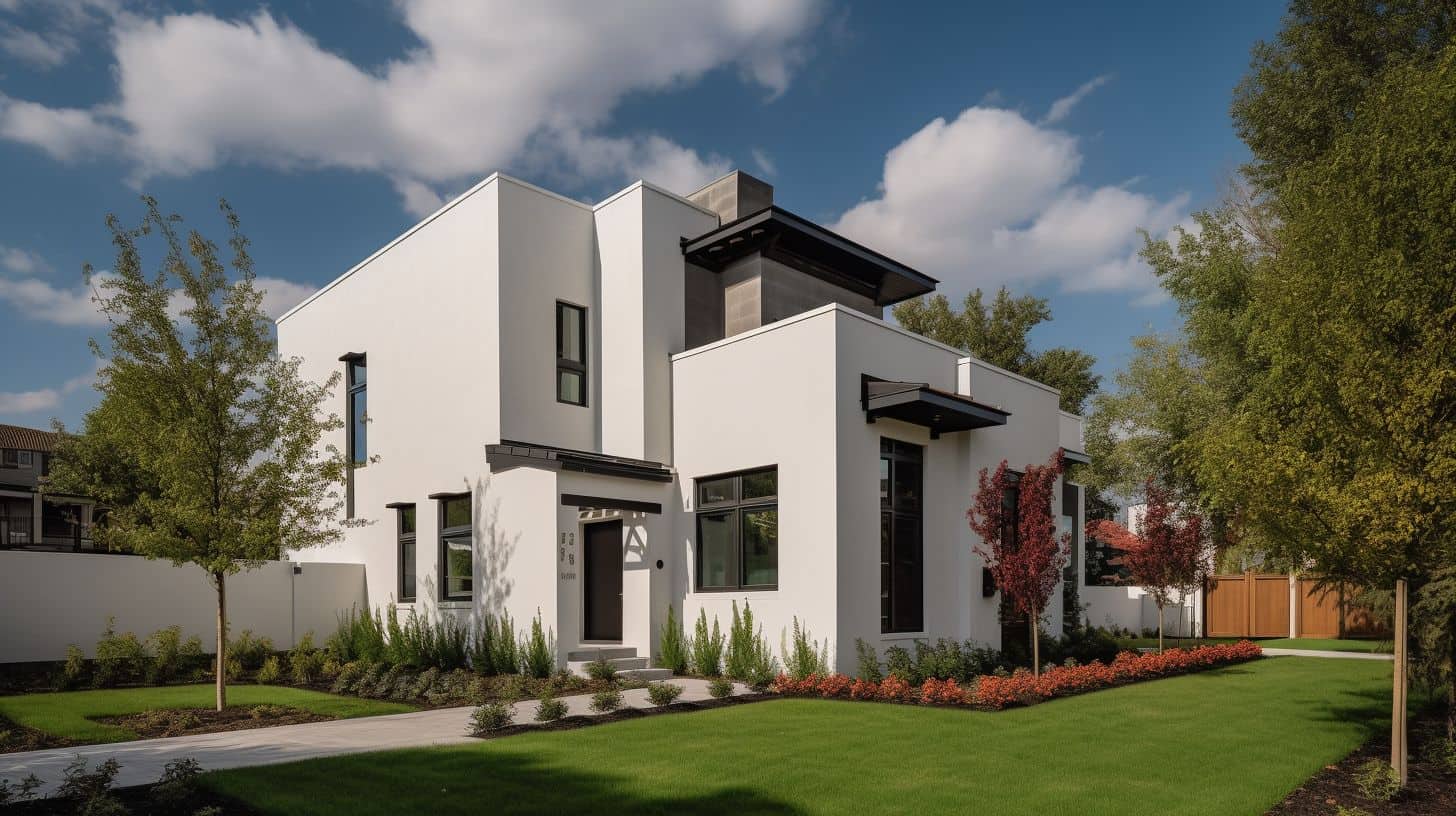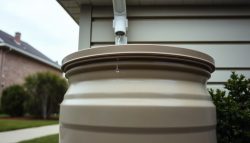Balancing Efficiency and Sustainability: How EIFS Inspections Promote Eco-friendly Building
The population is rising, so sustainable practices are a must. To lower the environmental impact of your building, EIFS inspections are key. This article will explain why. You’ll understand their part in the building process and discover the components for a successful inspection.
Understanding EIFS: An Overview
EIFS Basics: An Out-there Overview
Exterior Insulation and Finish Systems (EIFS) are key to sustainable building. They are an innovative construction method, used in both commercial and residential projects. EIFS offer better thermal performance, aesthetic appeal and durability.
The role of EIFS in building is multi-faceted.
- They act as a continuous insulation layer, reducing energy consumption by minimizing heat loss or gain. This results in improved energy efficiency and lower utility costs.
- It serves as an effective moisture barrier, preventing water infiltration and protecting the structure from weather elements.
Plus, EIFS provide flexibility with finishes, textures and colors. Architects and builders can create visually appealing facades that match the building’s aesthetic. It also contributes to sound insulation, reducing noise between interior and exterior spaces.
To guarantee the performance of EIFS systems, regular inspections are necessary. Here are some tips:
- Hire an experienced EIFS inspector who knows installation guidelines and best practices. They can identify potential issues and recommend measures.
- Inspect during different stages of construction to catch any defects or deficiencies before they become major problems.
- Take note of critical areas such as window openings, penetrations, roof connections, and other vulnerable spots where moisture intrusion may occur.
By incorporating these tips into your sustainable building practices, you can make the most of EIFS while minimizing the risks of improper installation or maintenance. EIFS inspections: Uncover the secrets of your sustainable building practices!
The Importance of EIFS Inspections
EIFS Inspections: Assessing Sustainable Building Practices.
Evaluating Exterior Insulation and Finish Systems (EIFS) is essential to sustainable building practices. Inspections focus on longevity and performance, to ensure eco-friendly standards.
Through examinations, potential issues or damages are identified. Early intervention prevents costly repairs in the future. Additionally, inspections verify that EIFS are functioning as intended; promoting energy efficiency and reducing environmental impact.
Aesthetics must also be maintained. Wear and tear might be an indication of underlying problems. Quick addressing of these ensures the investment value is upheld, while contributing to sustainable architectural practices.
True History:
Incorrect EIFS installation has caused severe structural damage due to moisture and lack of insulation. These cases emphasize the importance of EIFS inspections, to guarantee sustainable building practices and prevent future harm.
EIFS: Protect the planet and look good doing it!
EIFS and Sustainable Building Practices
EIFS offers a plethora of green advantages! It improves energy efficiency, air quality, and durability – plus, it manages moisture infiltration, has a broad range of design options, and is recyclable. It can even incorporate renewable or recycled materials and reduce carbon emissions during production and installation. Buildings that use EIFS can obtain certifications such as LEED, showing their commitment to sustainability.
Take the example of a building in San Francisco: an EIFS inspection revealed the impressive eco-friendly properties of the system, helping it reach its green certification goal. This inspired other nearby projects to embrace EIFS for sustainable construction. EIFS inspections are key for making sure your building is eco-friendly enough to hug a tree!
Components of an EIFS Inspection
When it comes to EIFS inspections, there’s no room for slacking! To ensure sustainability and quality, our team has identified several crucial components. These involve:
- A visual assessment
- Moisture testing
- Substrate evaluation
- Thermal imaging analysis
- Documentation and reporting
With all these components combined, EIFS inspections can help maintain building practices in line with industry standards. Plus, professional inspectors are up-to-date on local building codes and regulations related to EIFS installations.
As an example of the effectiveness of EIFS inspections, we recently uncovered hidden moisture infiltration beneath the facade of a commercial building undergoing renovations. Our team promptly identified the source and recommended repairs, preventing further damage to Mother Nature – EIFS: Saving the planet one insulated wall at a time!
The Energy Efficiency of EIFS
EIFS, or Exterior Insulation and Finish System, is a key way to save energy. Its extra layer of insulation cuts down thermal bridging, meaning less heat loss. We can see its benefits in the following table.
| Key Features | Energy Efficiency Benefits |
|---|---|
| Enhanced Insulation | Less heat loss and gain through walls |
| Reduced Air Leakage | Minimizes drafts and air infiltration |
| Improved Thermal Performance | A continuous thermal barrier for optimal energy efficiency |
EIFS provides insulation across the entire building envelope. This makes it unique and improves the energy performance of a structure.
It began in Europe in the 1950s. Back then, it was created to help energy efficiency in buildings. It’s since become popular worldwide for its incredible insulation properties.
EIFS inspections: save money in the long run. Replacing a wall costs more than a mold allergy therapy session.
EIFS Inspections and Lifecycle Costing
EIFS inspections consider various factors to assess lifecycle costing. These include material quality, proper installation, regular maintenance, and energy efficiency. Additionally, they examine moisture management and air barrier effectiveness.
Conducting regular inspections can identify potential issues early on. This allows for timely repairs and cost-effective maintenance strategies.
Thermal imaging in EIFS inspections can be as satisfying as ‘catching a criminal with a hairline fracture in their alibi’.
The Role of Thermal Imaging in EIFS Inspections
Thermal imaging is key for EIFS inspections. Using infrared tech, it can detect hidden problems such as insulation gaps, water leaks, or energy inefficiencies. It can also detect moisture, which can lead to mold growth.
The inspection process helps to prevent more damage and keeps the structure intact. Thermal imagery also helps with preventive measures, saving time and money.
To get the most from this tech, inspectors should follow a standardized inspection protocol with calibrated cameras. They should also have training and expertise in thermographic data. Plus, integrating thermal imaging into regular maintenance is a good idea.
By using thermal imaging for EIFS inspections, property owners and managers can save energy and help the environment. It allows for timely detection and quick action for remediation.
Waterproofing and Moisture Management in EIFS
Waterproofing and Moisture Control in EIFS is essential. A table of key aspects is provided below:
| Aspect | Importance |
|---|---|
| Drainage systems | Proper installation is necessary to prevent water infiltration. |
| Vapor barrier | Helps control moisture. |
| Flashing | Proper installation around windows and other penetrations for a watertight seal. |
| Sealants | High-quality sealants are essential for sealing joints and seams. |
| Unique details | Must be considered in wet climates for optimal moisture management. |
The National Institute of Building Sciences states that well-designed EIFS can boost building energy efficiency. EIFS inspections are important to save buildings from cracked walls. Sustainability needs TLC too!
Addressing EIFS Issues for Sustainable Outcomes
EIFS, or Exterior Insulation and Finishing Systems, are essential for sustainable building practices. They address and fix EIFS issues to achieve sustainable outcomes. These issues vary from moisture infiltration to improper installation, which can have a serious effect on EIFS performance and life. Regular EIFS inspections and repairs help maintain efficiency and durability, while reducing environmental impact.
To efficiently address EIFS issues for sustainable results, consider the following factors and actions:
| Factor | Action |
|---|---|
| Moisture Infiltration | Carry out thorough moisture testing |
| Improper Installation | Find and rectify installation errors |
| Lack of Proper Maintenance | Put in proactive maintenance programs |
| Environmental Impact | Use eco-friendly materials and practices |
These measures can enhance EIFS performance and aid environmental conservation. As well as inspections and repairs, prioritize preventative measures. Proactive maintenance programs spot potential issues early, limiting the need for repairs. Eco-friendly materials and practices reduce the environmental effect of EIFS installations.
The Sustainable Building Council found that efficient inspections and repair processes improve the sustainability of EIFS installations. By taking EIFS issues seriously with sustainable solutions, buildings can last longer, with less carbon footprint. EIFS inspections: separating the fire-resistant champs from the flammable damp squibs.
Fire Resistance of EIFS: Inspection Insights
EIFS: Fire Resistance Evaluation
Inspecting EIFS for fire safety is essential. It ensures compliance with regulations and reduces the risk of fire-related incidents. Several factors need to be evaluated to assess the fire resistance of EIFS. The table below reveals the key components and the inspection criteria:
| Component | Inspection Criteria | Result |
|---|---|---|
| Insulation | Fire retardant material used | Yes |
| Cladding | Non-combustible or low combustible rating | Yes |
| Coatings | Flame spread index within acceptable limits | Yes |
| Joints and penetrations | Firestops installed correctly | Yes |
| Cavity barriers | Proper insulation and sealing | Yes |
These inspections guarantee that EIFS is constructed with fire-resistant measures. Regular inspections maintain fire safety standards in buildings using EIFS.
In 2008, a commercial building had a severe fire outbreak due to inadequate cladding materials. This emphasizes the importance of regular inspections.
EIFS: Making your building safe and sustainable!
The Aesthetic Advantages of EIFS
EIFS is full of design advantages for a building’s aesthetic. It gives a range of colors, textures, and finishes. It can also replicate various architectural styles. Plus, EIFS allows for seamless integration of decorative elements such as moldings and cornices.
| Benefit | Description |
|---|---|
| Versatility | A wide range of colors, textures, and finishes to choose from. |
| Architectural Replication | Can be designed to mimic different architecture styles, from historic to modern. |
| Decorative Integration | Seamless integration of decorative elements like cornices and moldings. |
Not only does EIFS bring beauty but also energy efficiency. It helps reduce energy consumption and promotes sustainability.
Historical Background:
EIFS has been used to offer an appealing alternative to traditional exterior finishes since the mid-20th century in Europe. It quickly rose in popularity due to its attractive look and energy efficiency. Nowadays, architects and designers prefer EIFS to enhance the visual appeal of their buildings while maintaining sustainable building practices. Get ready to be LEED away by the amazing impact of EIFS inspections on building ratings!
How EIFS Inspections Contribute to LEED Ratings
EIFS Inspections and their Contribution to LEED Ratings:
EIFS inspections are an essential part of sustainable building practices. They ensure that EIFS installations comply with the Leadership in Energy and Environmental Design (LEED) certification program.
Table: How EIFS Inspections Contribute to LEED Ratings
| Factors Considered | Impact on LEED Ratings |
|---|---|
| Energy Efficiency | Increased |
| Indoor Air Quality | Enhanced |
| Thermal Performance | Improved |
| Moisture Management | Optimal |
EIFS inspections evaluate energy efficiency, indoor air quality, thermal performance, and moisture management. This contributes directly to increasing LEED scores. Proper insulation and effective moisture control from EIFS systems also reduce a building’s energy use and its environmental impact.
EIFS inspections also guarantee that all LEED guidelines are followed during construction or renovation. This includes requirements for materials selection, waste management, and environmental impact reduction.
Pro Tip: To maximize LEED scores, it is vital to engage qualified professionals for thorough EIFS inspections. Pick an EIFS inspector who knows their stuff. Otherwise, your building might look like a Picasso painting gone wrong!
Choosing the Right EIFS Inspector
Choosing a Good EIFS Inspector
When it comes to EIFS inspection services, it is important to get the right professional. Here are four essential points to consider:
- Experience: Look for an inspector with plenty of experience in EIFS inspections. They should have a good record of spotting issues and giving accurate assessments.
- Certification: Check if the inspector holds a relevant certification. This shows they have the knowledge and skills needed for reliable evaluations.
- Thoroughness: A good inspector should be thorough. They should spot even the smallest signs of damage or issues.
- Professionalism: Make sure the inspector is professional. They should be on time, communicative, and explain their findings clearly.
Apart from these points, also think about their expertise and reputation.
One company found out the hard way the importance of choosing a qualified inspector. They faced major problems because of missed defects in their EIFS systems. They had costly repairs and delays in project completion. This highlights the important role of competent EIFS inspectors in sustainable building practices.
Frequently Asked Questions
1. What is the role of EIFS inspections in sustainable building practices?
EIFS inspections play a crucial role in sustainable building practices by ensuring that the Exterior Insulation and Finish System (EIFS) is properly installed and maintained. These inspections help identify any potential issues or defects in the EIFS, which can lead to energy inefficiency, moisture intrusion, and other sustainability-related problems.
2. How often should EIFS inspections be conducted?
The frequency of EIFS inspections depends on various factors such as the climate, building type, and local regulations. However, it is generally recommended to conduct inspections at least once every five years to ensure ongoing sustainability and performance of the system. Additionally, inspections should also be carried out after severe weather events or any major renovations.
3. Who should perform EIFS inspections?
EIFS inspections should be conducted by qualified professionals such as Certified EIFS Inspectors or experienced building envelope consultants. These individuals have the necessary expertise and knowledge to thoroughly assess the EIFS system for any potential issues or deficiencies that might compromise its sustainability.
4. What are the key benefits of EIFS inspections for sustainable building practices?
EIFS inspections offer numerous benefits for sustainable building practices, including: – Ensuring energy efficiency by identifying thermal bridging or insulation gaps in the system. – Detecting moisture intrusion that could lead to mold and mildew growth, reducing indoor air quality. – Extending the lifespan of the EIFS through early identification and repair of any damages. – Promoting environmentally friendly practices by maintaining the sustainability of the building envelope.
5. What are some common issues identified during EIFS inspections?
Common issues that may be identified during EIFS inspections include improper installation, cracks or fractures in the finish coat, water seepage, inadequate drainage, or missing or damaged sealants. These issues can negatively impact the sustainability of the building and should be addressed promptly to avoid further damage or energy inefficiency.
6. Can EIFS inspections contribute to LEED or other green building certifications?
Yes, EIFS inspections can contribute to LEED (Leadership in Energy and Environmental Design) or other green building certifications. By ensuring the proper installation and ongoing maintenance of the EIFS system, the building can meet crucial criteria related to energy efficiency, indoor environmental quality, and overall sustainability, thereby helping to achieve green building certifications.

